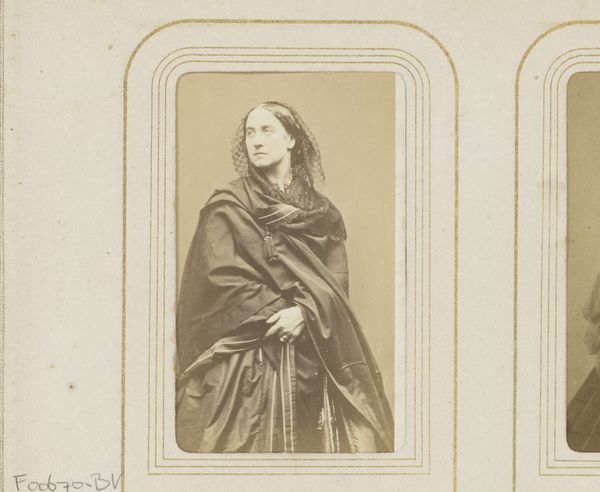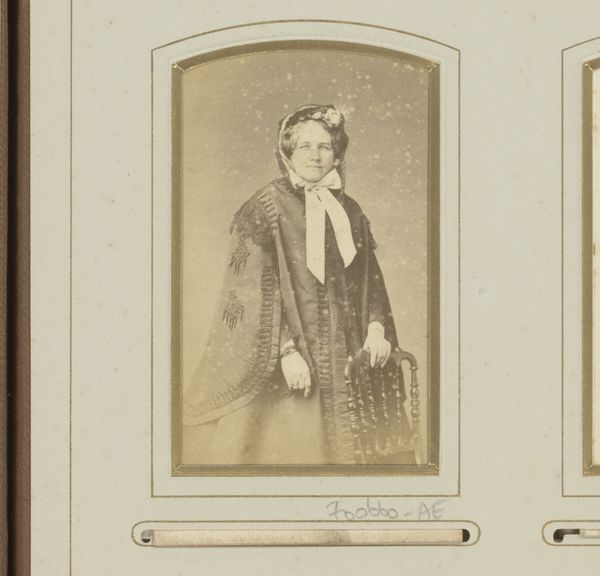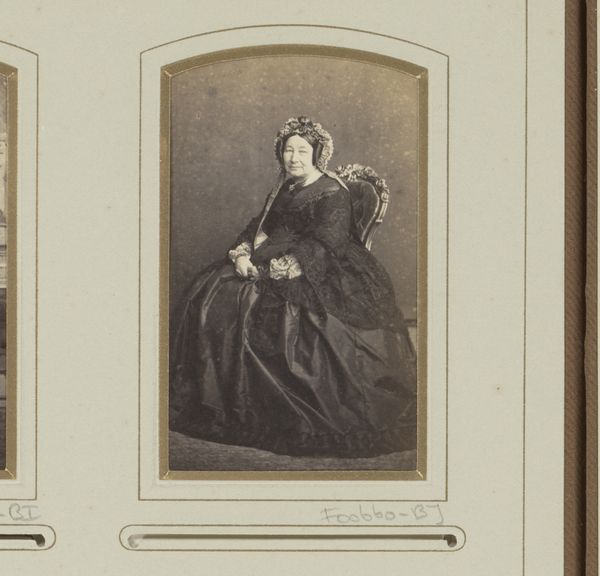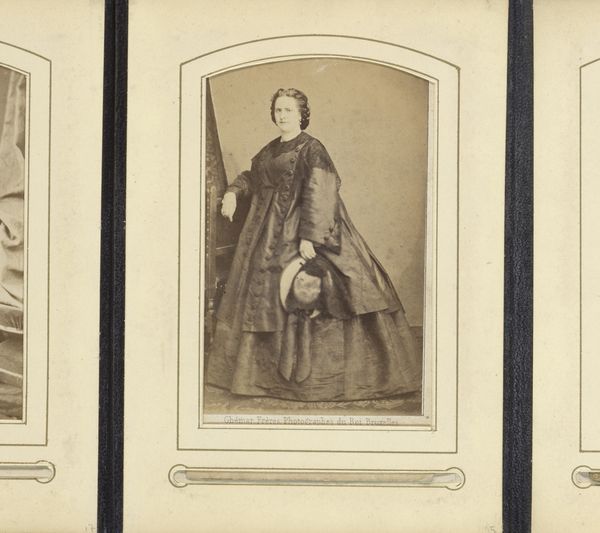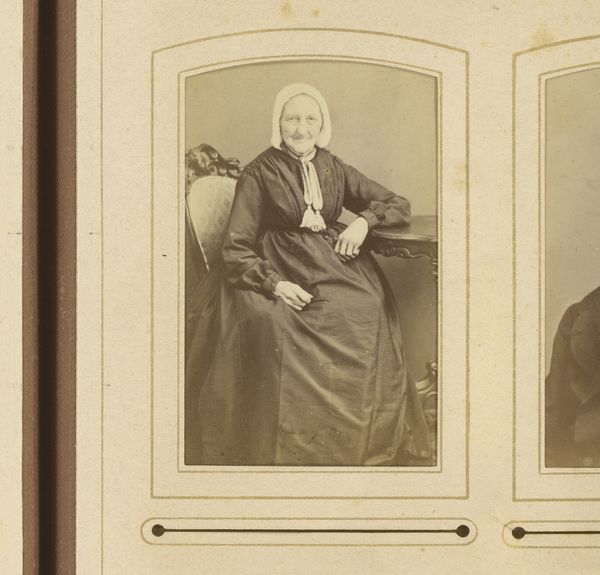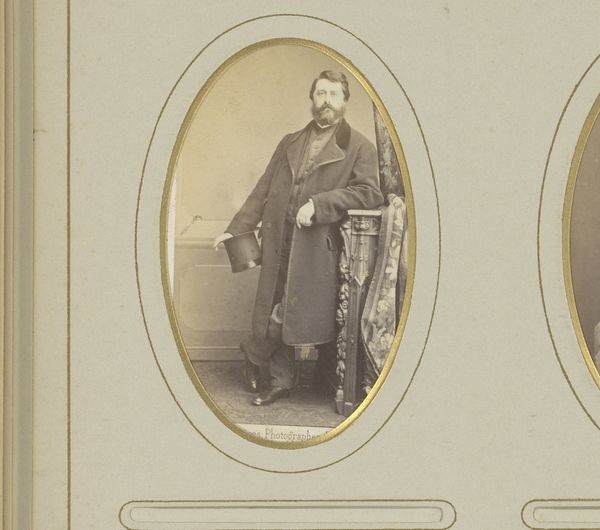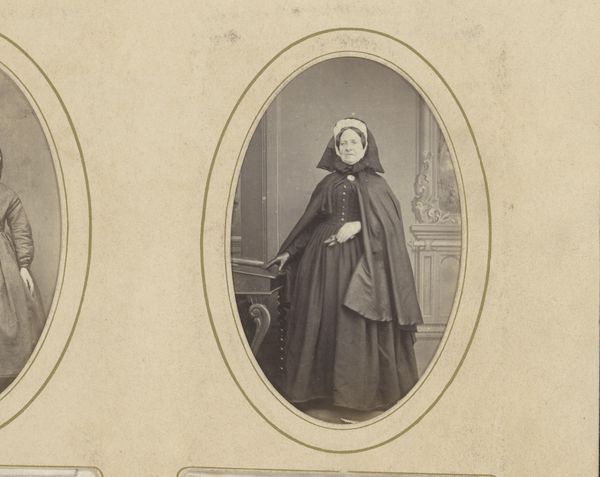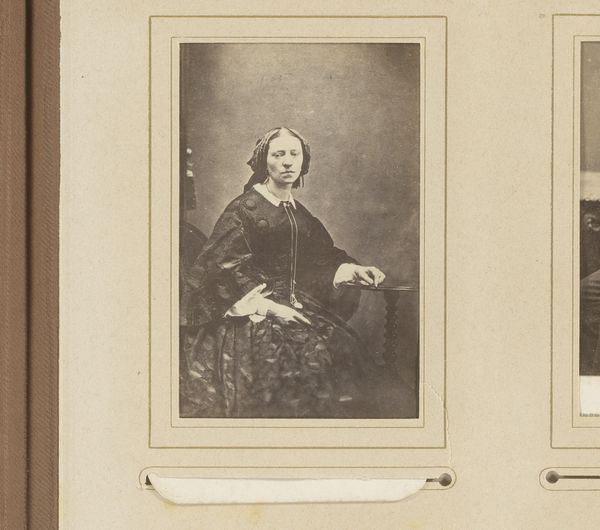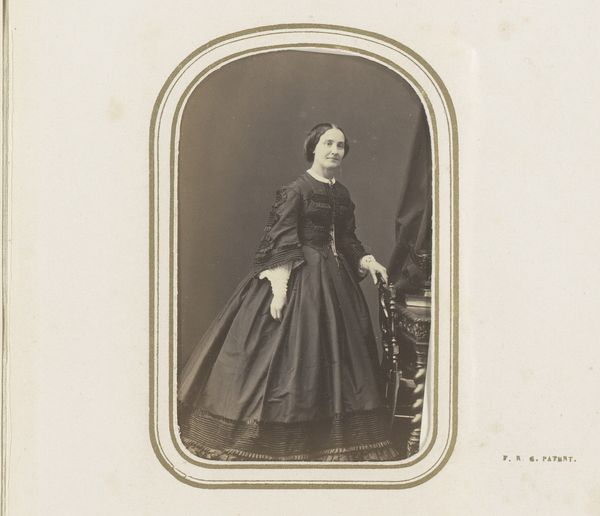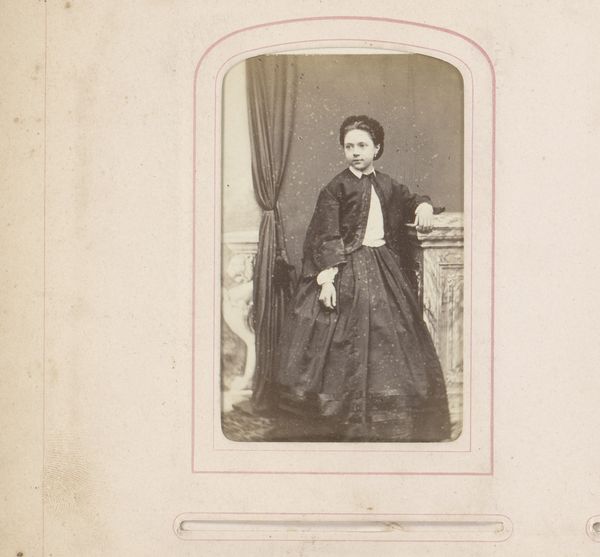
Portret van een staande vrouw in zwarte kleding met witte lelies in de hand 1853 - 1880
0:00
0:00
photography
#
portrait
#
photography
Dimensions: height 84 mm, width 51 mm
Copyright: Rijks Museum: Open Domain
Editor: This photograph, "Portrait of a Standing Woman in Black Clothing with White Lilies in Hand" by Joseph Dupont, was taken sometime between 1853 and 1880. The black and white image is really striking—there's a somber, almost gothic feel to it. The lilies especially catch my eye. What do you read into the symbolism here? Curator: The lilies certainly speak volumes. Traditionally, lilies represent purity, resurrection, and sympathy, but in Victorian photography, the context is key. Do you notice anything else about the woman’s attire? Editor: Yes, the dark clothing. That feels very deliberate. Curator: Exactly! Black was the color of mourning. Combine that with the lilies, and it points to a portrait likely taken during or shortly after a period of bereavement. Now, consider the meticulous detail of the lilies and the heavy shadow obscuring some of her features. It hints at something deeper, perhaps a veiled grief or a spiritual message about remembrance. Editor: So the lilies aren't just about purity but also about remembering someone who has passed? The lilies provide a layer of comforting beauty. Curator: Precisely. And remember, in the Victorian era, photography was often used to memorialize the dead, preserving their image when other options were limited. It serves as a touchstone connecting her emotions and social status. The image serves to preserve memory. Editor: It is a window into the past but loaded with symbols meant to evoke strong emotions. I hadn't considered all of those cultural layers. Curator: And it's fascinating how potent these visual languages remain. Even across centuries, certain symbols trigger similar responses in us.
Comments
No comments
Be the first to comment and join the conversation on the ultimate creative platform.

